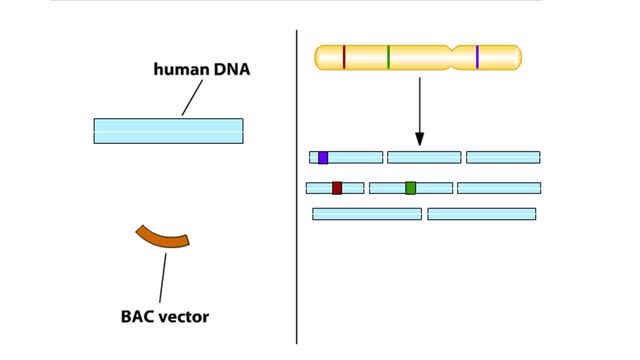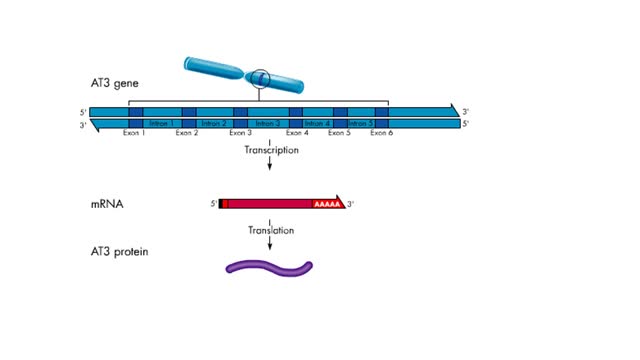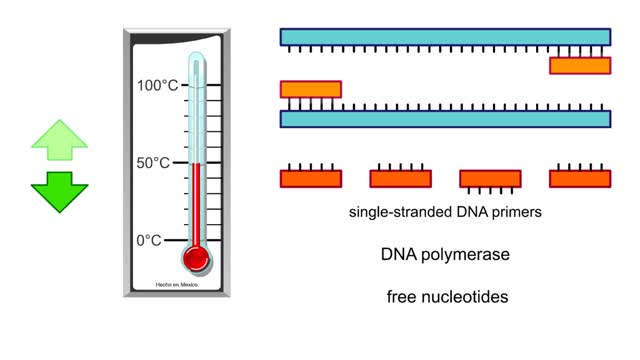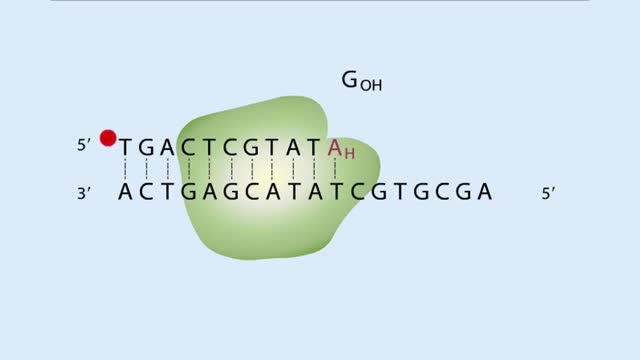Search Results
Results for: 'DNA Sequences'
Hierarchical Sequencing Method - Sequence Tagged Sites
By: HWC, Views: 10309
In the hierarchical sequencing method, researchers begin by collecting cells. In humans, each cell contains 23 pairs of chromo-somes. Here we specifically track the DNA from just one of the 23 pairs. Chromosomes have a series of unique DNA sequences, called sequence-tagged sites (STSs), that a...
Transcription - Introns and exons
By: HWC, Views: 8060
In most eukaryotic genes, coding regions (exons) are interrupted by noncoding regions (introns). Exon - RNA sequences in the primary transcript that are found in the mRNA. Intron - RNA sequences between exons that are removed by splicing. During transcription, the entire gene is copied ...
Polymerase chain reaction PCR - Animation
By: HWC, Views: 4978
Polymerase chain reaction (PCR) is a method that amplifies fragments of DNA. The purpose of PCR is to create copies of a specific region of DNA. To use this technique, researchers must know the base sequences at either end of the region of interest. They use this information to create...
DNA Sequences - Dideoxy Sequencing
By: HWC, Views: 10384
A short, radiolabeled primer is annealed to the single-stranded DNA to be sequenced. The DNA serves as a template for in vitro DNA synthesis. The DNA-primer mixture is split into four separate tubes. DNA polymerase and a solution of dNTPs are added to each tube. One of the four 2',3' dideoxy-N...
SNP Polymorphysim Microarray Chip - How to Test a Person's DNA
By: HWC, Views: 10391
To test a person's DNA, a researcher first needs a source of tissue. Most of the cells in a blood sample are red blood cells, which lack nuclei, but there are also a number of white blood cells, which do contain nuclei and chromosomal DNA. If we could see a particular DNA sequence in these cel...
Major Elements in Biological Molecules: Nucleic acids
By: HWC, Views: 10970
DNA and RNA are nucleic acids (polymers of nucleotides). Two polymers with complementary nucleotide sequences can pair with each other. This pairing endows nucleic acids with the ability to store, transmit, and retrieve genetic information. Two strands of DNA pair by hydrogen bonding. A compon...
Major Elements in Biological Molecules: Proteins
By: HWC, Views: 10542
Proteins are chains of amino acids linked by peptide bonds. The 20 different amino acids used to make all proteins differ only in their side chains, and the properties of these side chains account for the great diversity of protein structure and function. Collagen is an example of how a prote...
Protein Structure - Primary, Secondary, Tertiary and Quaternary
By: HWC, Views: 10934
A protein's first order structure, or primary structure, begins with the amino acid sequence of the polypeptide chain. The 20 different amino acids can be arranged in an infinite number of sequences. For example, the hormone insulin, which regulates the uptake of glucose from the blood into ce...
By: Administrator, Views: 15158
The lac operon (lactose operon) is an operon required for the transport and metabolism of lactose in Escherichia coli and many other enteric bacteria. Although glucose is the preferred carbon source for most bacteria, the lac operon allows for the effective digestion of lactose when glucose is no...
Advertisement











